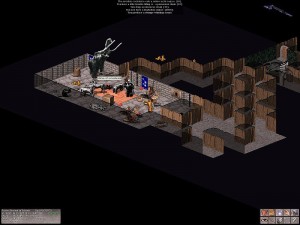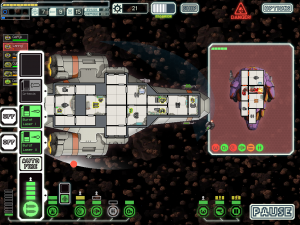The Roguelike Similarity Conundrum
Posted by Rampant Coyote on October 1, 2014
 I’ve been playing through a few smaller, lesser-known roguelikes lately – primarily more modern, graphical roguelikes with simplified interfaces. It’s been fun, but while I might truthfully say I’ve “played them to death” (or two or three or eight deaths), I can’t say I’ve really played any of them to the point of truly grokking them.
I’ve been playing through a few smaller, lesser-known roguelikes lately – primarily more modern, graphical roguelikes with simplified interfaces. It’s been fun, but while I might truthfully say I’ve “played them to death” (or two or three or eight deaths), I can’t say I’ve really played any of them to the point of truly grokking them.
Some are better than others, some are more complete than others, and many of them feel like they could have been built with a “Roguelike Maker” tool. Just mix in content, stir, and allow to cool before serving. Most have their own little unique quirks, which is good, and interesting to play. But there’s definitely a point when I’ve played several where I wonder in which roguelike I saw something or another. They kinda blur together.
Part of the problem is that these more streamlined, “lightweight” roguelikes are all variations of the common “roguelike” experience and gameplay loop. They don’t have the depth (or complexity) of games like Nethack (pictured above with a graphical front-end) or some of the other cult classics. This isn’t necessarily a bad thing, as they are streamlined and far easier to get started playing. But the downside when the gameplay all feels very similar and the dungeons have similar random-level generation algorithms is that they really need to do something cool to stand out. Just different monsters, items, and skills aren’t quite enough.
In this respect, traditional fantasy RPGs do have an advantage: Story. That’s not to say roguelikes cannot have a story – many do (at least one that goes beyond “kill the foozle” or “recover the unobtainium orb” – but it’s harder to tell one with procedural content.
To me, this just means that – like any other genre that’s getting kinda crowded (which is all of them) – roguelikes need to step up their game and work harder to stand out. Maybe not quite the extent that FTL did. Many argue as to whether or not it should count as a “roguelike” – which I consider a total non-problem. But FTL, Diablo, Receiver, Eldritch, Sword of the Stars: The Pit, and other titles are good examples how far you can take the “procedural death labyrinth” idea. Variations on setting, mood, style, game mechanics, level creation, and even representation of your ‘character’ or group can totally change the flavor of the game. This is a good thing.
 But it’s not just a “pick one from column A, and one from column B” thing, either. Perhaps more than games with hand-crafted content, procedural content games really need to have these elements – however they are represented – come together as a complete whole to unify the game. FTL really is the poster child for this concept for me – the way they took the core feeling of being in command of a crew on a small starship – and everything about the game feeds back into this idea. The story, the encounters, the mechanics, the “loot” all support this idea. But even though Sword of the Stars: The Pit is a far more conventional roguelike, the sci-fi setting and story elements also help it stand apart.
But it’s not just a “pick one from column A, and one from column B” thing, either. Perhaps more than games with hand-crafted content, procedural content games really need to have these elements – however they are represented – come together as a complete whole to unify the game. FTL really is the poster child for this concept for me – the way they took the core feeling of being in command of a crew on a small starship – and everything about the game feeds back into this idea. The story, the encounters, the mechanics, the “loot” all support this idea. But even though Sword of the Stars: The Pit is a far more conventional roguelike, the sci-fi setting and story elements also help it stand apart.
And now… moving to the superset of RPGs: Same advice. So many RPGs have roughly similar mechanics (especially if created with something like RPG Maker), the story, characters, mood, theme, setting, and everything else absolutely should be blended together into a tightly interwoven whole. Story shouldn’t just be ‘tacked on’ to an otherwise paint-by-numbers RPG (or worse, a procedurally generated roguelike… if a computer could do just as good a job as a human in making the content, yer doin’ it wrong…). It should have a strong sense of its own unique identity, and so should the player.
Filed Under: Roguelikes - Comments: Read the First Comment
Felix said,
If you’re looking for original roguelikes, look no further than Ondřej Žára’s games. I gushed about them more than once on my blog (shameless plug). How could I not? They include a story-based game with a different kind of challenge on each map; a minimal Star Wars game where you play a Force user, and it feels like you are (amazing how much tactical thinking is involved in using just a handful of Force powers — no wonder Jedi often end up leading armies); and a model train simulator of all things (on a hex grid, for a change). All of them use ASCII art and run in a browser.
I only wish my two successful attempts were nearly as compelling. My point of originality was making them for the ZX Spectrum, which is sort of cheating I suppose. What can I say? Building on the formula isn’t as easy as it seems, and I can’t blame newcomers to the genre for trying their hand at a conventional, but polished roguelike before moving on to something more original.